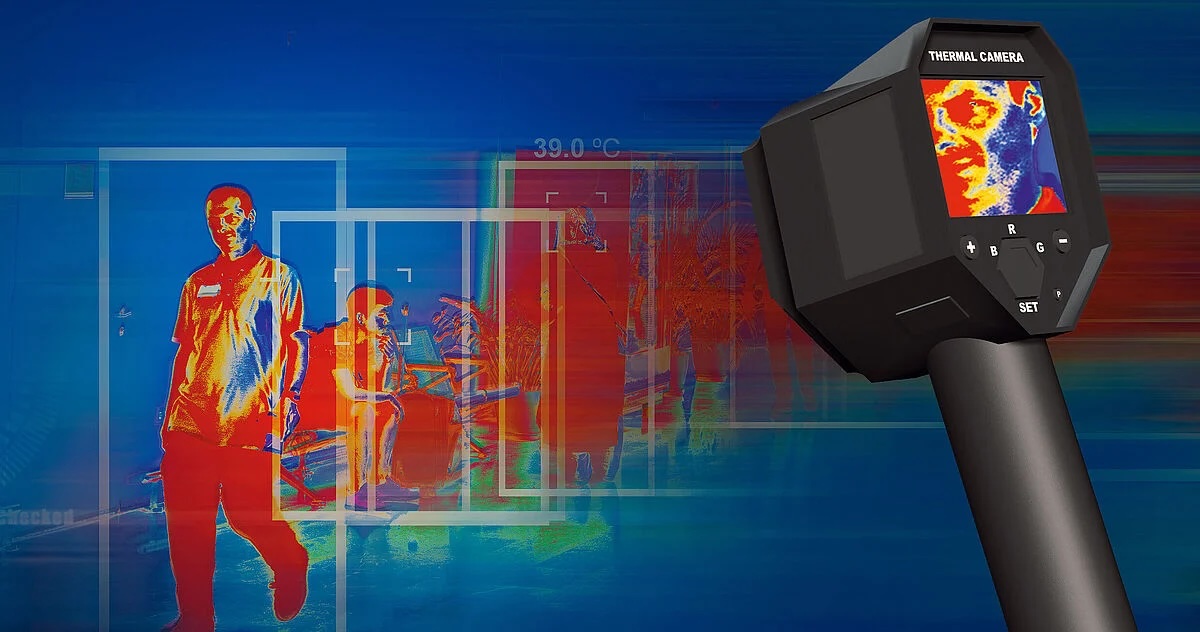
Thermal imagers are fascinating devices that let us see the world in a whole new light—literally! These gadgets detect heat and create images based on temperature differences. But how do they work? They capture infrared radiation, which is invisible to the naked eye, and convert it into a visual display. Why are they important? Thermal imagers are used in various fields like firefighting, medical diagnostics, and even wildlife observation. They help spot hidden dangers, diagnose illnesses, and track animals in the dark. Want to know more? Here are 25 intriguing facts about these incredible tools that might just surprise you!
What is a Thermal Imager?
Thermal imagers, also known as infrared cameras, detect heat emitted by objects and convert it into an image. These devices have a wide range of applications, from military use to home inspections. Here are some fascinating facts about thermal imagers.
-
Thermal imagers detect infrared radiation, which is invisible to the human eye. Infrared radiation is a type of electromagnetic radiation with longer wavelengths than visible light.
-
They can see through smoke, fog, and darkness. This makes them invaluable for firefighters and search and rescue teams.
-
Thermal imagers are used in medical diagnostics. They help detect abnormalities in body temperature, which can indicate various health issues.
-
They are essential in electrical inspections. Thermal imagers identify overheating components, preventing potential electrical fires.
-
Thermal imagers are used in wildlife research. They help track animals and study their behavior without disturbing them.
How Do Thermal Imagers Work?
Understanding how thermal imagers function can help appreciate their versatility and importance. These devices rely on advanced technology to create images based on temperature differences.
-
Thermal imagers use a special lens to focus infrared light. This light is then scanned by a phased array of infrared-detector elements.
-
The detector elements create a detailed temperature pattern called a thermogram. This thermogram is then translated into electric impulses.
-
The electric impulses are processed to create a visual image. This image shows different temperatures in various colors or shades of gray.
-
Thermal imagers do not emit radiation. They only detect the infrared radiation naturally emitted by objects.
-
They can measure temperature differences as small as 0.01 degrees Celsius. This high sensitivity makes them incredibly precise.
Applications of Thermal Imagers
Thermal imagers have a broad range of applications across various fields. Their ability to detect heat makes them useful in many situations.
-
They are used in building inspections. Thermal imagers identify heat leaks, poor insulation, and moisture issues.
-
Law enforcement uses thermal imagers for surveillance. They help track suspects and locate hidden objects.
-
Thermal imagers are used in agriculture. They monitor crop health and detect irrigation issues.
-
They play a role in automotive diagnostics. Thermal imagers identify overheating parts and other issues in vehicles.
-
Thermal imagers are used in astronomy. They help study celestial objects that emit infrared radiation.
Advantages of Using Thermal Imagers
Thermal imagers offer numerous benefits, making them indispensable in many fields. Their ability to detect heat provides unique advantages.
-
They provide non-contact temperature measurement. This is crucial in situations where direct contact is dangerous or impractical.
-
Thermal imagers offer real-time imaging. This allows for immediate analysis and decision-making.
-
They can cover large areas quickly. This makes them efficient for inspections and surveys.
-
Thermal imagers are non-invasive. They do not disturb the objects or environments they are used to inspect.
-
They enhance safety. By detecting potential hazards early, thermal imagers help prevent accidents and damage.
Challenges and Limitations of Thermal Imagers
Despite their many advantages, thermal imagers also have some limitations. Understanding these challenges can help in their effective use.
-
They can be expensive. High-quality thermal imagers can be costly, which may limit their accessibility.
-
Thermal imagers require regular calibration. This ensures their accuracy and reliability.
-
They can be affected by reflective surfaces. Shiny objects can distort the thermal image, leading to inaccurate readings.
-
Thermal imagers cannot see through walls. They detect surface temperatures, so they cannot provide images of objects behind solid barriers.
-
They require proper training to use effectively. Interpreting thermal images accurately requires knowledge and experience.
Thermal Imaging: A World of Hidden Wonders
Thermal imaging isn't just for spy movies. It's a game-changer in many fields. From firefighters seeing through smoke to doctors detecting fevers, this tech saves lives. Wildlife researchers use it to track animals without disturbing them. Even in construction, it spots heat leaks, saving energy and money.
Thermal cameras work by detecting infrared radiation, which all objects emit. The hotter something is, the more infrared it gives off. This info gets turned into images we can see, showing heat differences.
As tech advances, thermal imaging becomes more accessible and affordable. It's not just for professionals anymore. Homeowners use it to check insulation, and hobbyists explore its potential.
Thermal imaging opens up a world of hidden wonders, making the invisible visible. It's a tool that keeps proving its worth in surprising ways.
Was this page helpful?
Our commitment to delivering trustworthy and engaging content is at the heart of what we do. Each fact on our site is contributed by real users like you, bringing a wealth of diverse insights and information. To ensure the highest standards of accuracy and reliability, our dedicated editors meticulously review each submission. This process guarantees that the facts we share are not only fascinating but also credible. Trust in our commitment to quality and authenticity as you explore and learn with us.
